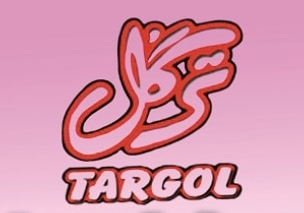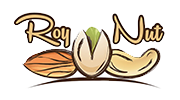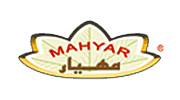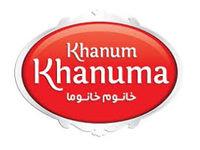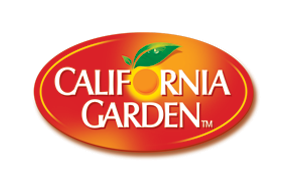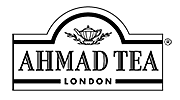Exploring the history and benefits of Iranian Saffron.
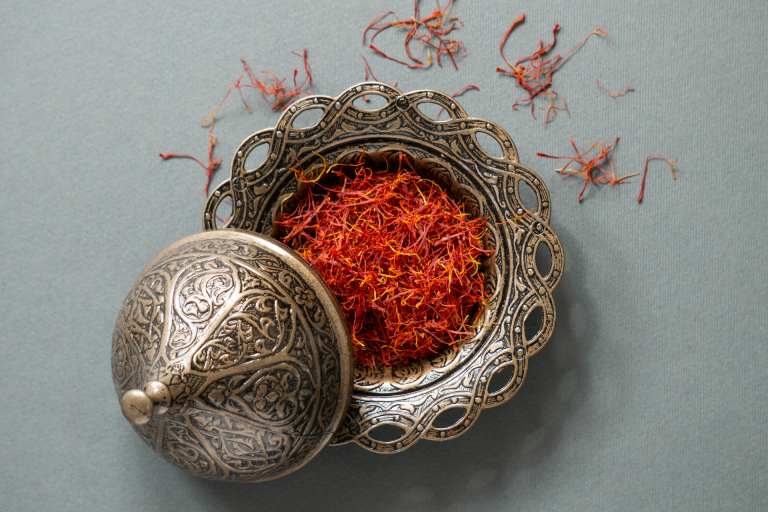
Throughout history, more than 100,000 plant species have been identified for their use as spices, yet only around 40 spices (and herb) plants have made it hold global significance and are being commercially traded. Among these, saffron stands out as the world’s finest and most precious spice.
Over here, we’ll be putting a spotlight on Iranian Saffron, one of the popular contenders for the top spot among spices. The illustrious “red gold” among different spices has taken routes throughout human history to end up in the spice racks of households and various offline & online supermarkets.
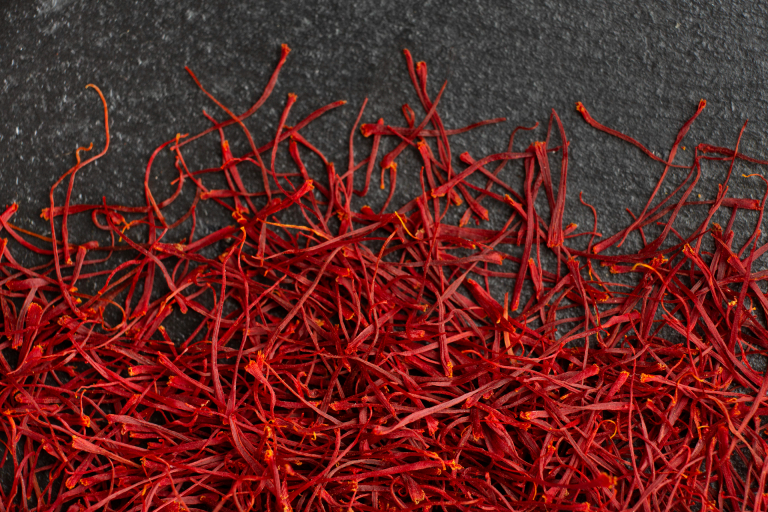
These delicate dry threads (stigmas) are extracted from the plant of the Crocus Sativus flower. Saffron imparts its essence to a lot of fields — be it food industry, beverages, perfumery, skincare or medicinal applications due to its unique composition and properties.
The Saffron market is huge with its applications on the following :
- Medicinal Raw Material
- Cosmetic
- Food Flavourings
- Ornamental Flowers
In this quick blog, we will be going on about this ancient spice, its diverse uses, and why it is a must-have spice in your place.
History of Saffron
First of all let us look at the history that went down for Saffron to become one of the most popular spices in the world.
The timeline of Saffron
- 2000–1800 BC: The oldest known depiction of saffron is found on a pot, marking the beginning of saffron’s historical presence around 3800 to 4000 years ago.
- 7th Century BC: Saffron’s recorded history is documented in an Assyrian botanical treatise, providing early evidence of its significance.
- 300–200 BC: Ancient Persian records indicate that Iranian saffron was introduced to China by Mogul invaders during this period, expanding its geographical reach.
- 10th Century AD: Saffron maintains high value, with threads discovered woven into ancient royal Persian carpets and shrouds, emphasizing its enduring importance in Persian culture.
- 1350: Saffron cultivation is introduced to England, marking its spread to Western Europe and showcasing its adaptability to diverse climates and regions.
- Late Middle Ages (Nuremberg): The European production and trade center for saffron shifts to Nuremberg. The Safranschou code is established to combat rampant counterfeiting, reflecting the spice’s economic importance.
- 14th Century: During the Black Death in Europe, saffron experiences a surge in demand for its perceived medical properties, leading to saffron piracy and unique historical events.
- 16th Century: The town of “Cheppinge Walden” in Essex is renamed “Saffron Walden,” becoming the saffron trading hub of England due to favorable soil and climate conditions.
- 17th Century AD: Saffron cultivation experiences significant expansion in Kashmir, contributing to its global trade network and solidifying its place in various international markets.
- 21st Century: Saffron continues to captivate global audiences with its unique applications and economic value.
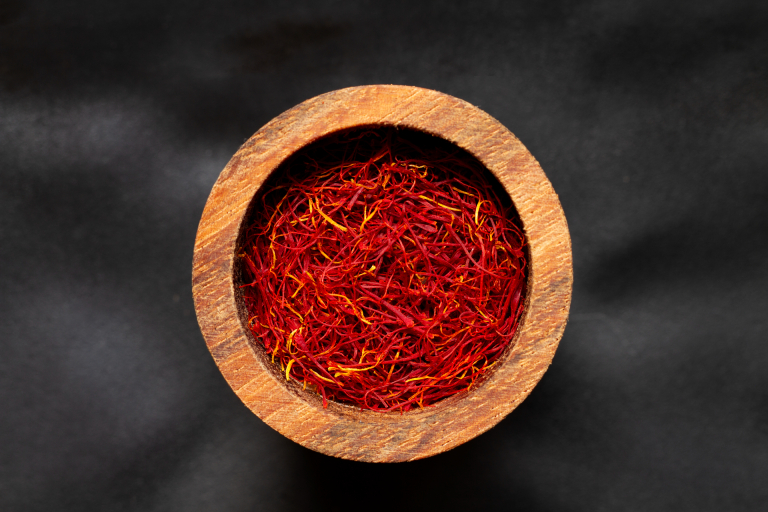
Iranian Saffron
Saffron, with its hay-like fragrance, slightly bitter taste, and goldish-yellow hue, is a subtle condiment renowned for its luxurious offerings of numerous applications. Its cultivation spans approximately 4000 years in Asian botanical gardens, with Iran, Spain, India, and Greece emerging as major producers dominating the global spice market. Iran, particularly, stands out as the primary producer, recognized for delivering Iranian saffron of the highest quality worldwide.
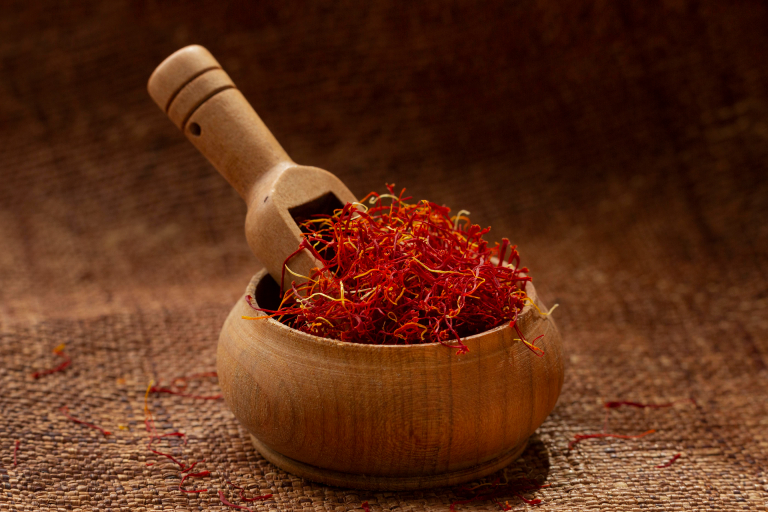
As the largest producer and exporter globally, accounting for over 90% of global production, Iranian saffron is acclaimed for its superior quality. The sought-after Persian Saffron threads are directly sourced from the country, benefiting from favourable climate and soil conditions that create an optimal environment for cultivation. More than half of Iranian saffron originates from the Khorasan Province, situated in the north-east of Iran. Key cropping areas such as Ghayen, Torbat-e Heydarieh, Birjand, and Ferdows also contribute significantly to the production of this valuable spice.
Top 5 Benefits of Iranian Saffron:
- Culinary Addition
Saffron is highly famous for its distinct flavour and aromatic essence for diverse cuisines. This thread of spice, with its subtle yet impactful taste, serves as a culinary addition, enriching both sweet and savoury creations with a touch of luxury. In various culinary traditions, from the Mediterranean to Asia and throughout European cuisines, saffron emerges as a versatile and cherished ingredient. Its ability to impart a colour shade and a unique flavouring profile makes it an essential add-on for many dishes such as Saffron Chicken Tagine, Risotto alla Milanese and Steamed Saffron Rice with Tahdig. Saffron is also added for aroma and colour to sweets like kesar kulfi and biryani dishes, which are famous serves in India.
- Medical Purpose
Saffron is believed to stem from a mutation in the wild C. cartwrightianus within the Iridaceae family. It has a complex composition including safranal, crocin, carotenoids, glycoside forms, terpene derivatives, anthocyanins, flavonoids, riboflavin, thiamine, amino acids, proteins, and starch.
Saffron is rich in antioxidants, helps reduce oxidative damage and inflammation in the human brain. It is also known for memory-enhancing, antioxidant, and anti-inflammatory properties. Its historical uses include addressing stomach cramps, flatulence, respiratory ailments, blood disorders, heart diseases, and serving as an aphrodisiac. Other versatile applications extend to folk remedies for headaches and colds, demonstrating antidiarrheal and anti-dysentery properties.
- Cosmetic and Beauty Applications:
Saffron’s natural compounds make it a valuable ingredient in cosmetics and beauty products. Its antioxidant properties contribute to skin health, promoting a radiant complexion. Saffron-infused skincare items are popular for their potential to enhance skin texture and tone.
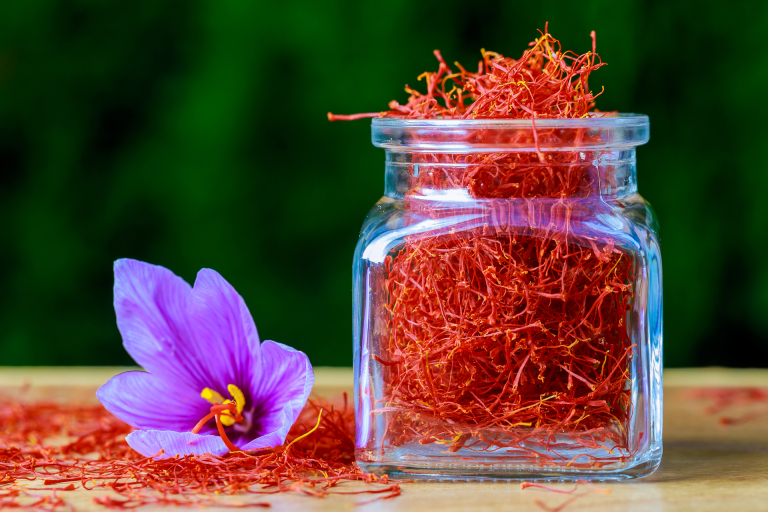
Renowned cosmetic brands incorporate saffron into skincare products, harnessing its antioxidant properties. Products like saffron-infused face masks, serums, and creams are well-received for promoting radiant skin. For example, saffron-infused face creams from luxury brands are sought after for their potential to enhance skin texture and provide a healthy glow.
- Textile Dyeing:
The rich pigments in saffron make it an excellent natural dye for textiles. The spice imparts warm and earthy tones, and its use in dyeing processes aligns with eco-friendly and sustainable practices in the textile industry.
In regions like India, saffron has been historically utilised as a natural dye in the textile industry. Traditional fabrics like silk and cotton are dyed with saffron, imparting warm and earthy tones. This eco-friendly practice aligns with sustainable textile manufacturing, exemplifying saffron’s versatility beyond its use of culinary applications.
- Cultural Significance:
Saffron holds cultural significance in many regions, frequently featuring in traditional rituals, ceremonies, and festive celebrations. Its inclusion in cultural practices underscores its importance and symbolic value in various occasions.
In regions like Iran, saffron plays a central role in traditional ceremonies, notably Nowruz, the Persian New Year. The spice symbolically marks auspicious beginnings, contributing to the cultural richness of festive celebrations. Kashmiri saffron, recognized for its quality, is a staple in traditional wazwan feasts. In Sweden, Lussekatter saffron buns are a customary treat on Lucia Day, adding a touch of tradition and flavour to the celebration.
- Other Benefits – Economic Value:
Saffron cultivation plays a huge role in boosting the economies of regions where it is grown and cultivated. Employing a harvesting process that involves delicate hand-picking of saffron threads, this spice emerges as a high-value commodity in the global market, fostering economic growth and sustaining livelihoods.
The saffron market is categorically divided based on its thread, powder, and liquid forms. The thread segment notably commands the largest market share, contributing to a growth of USD 210.37 million from 2023 to 2027, solidifying saffron’s status as a highly demanded spice.
The pricing range can span from £4.00 to £50 per gram, depending upon the saffron’s quality and origin. Notably, the town of Kashmir in India also stands out for its significant contribution to the global saffron market, with its hand-picked saffron threads during the flowering season supporting local livelihoods. Spain, Greece, and Afghanistan are other popular exporters in the global saffron trade.
Here is a list of prominent companies and manufacturers dominating the global saffron market:
- Good Life Global
- Mehr Azin Bonab
- Esfahan Pishro
- Damon Enterprises
- Royal Saffron
- Linkage Internationals
- HEA & Co Spanish
- Jmd Agro Foods
- Saffron Business Co.
- Iran Saffron Company
Did you know that Iranian Saffron is very expensive?
When you search for saffron, this is one of the most commonly asked questions. In the times of ancient Greece and Rome, saffron held immense value and was among the most prized and costly aromatic spices. Interestingly, saffron is even considered more precious than gold.
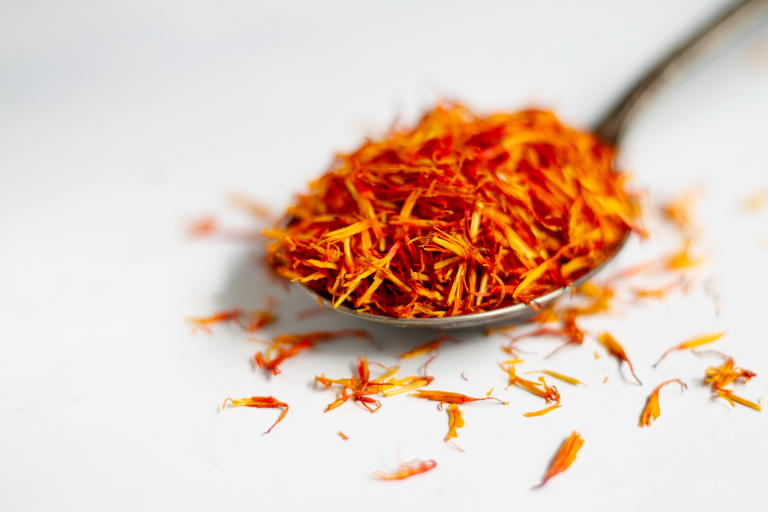
The high cost of Iranian Saffron can be attributed to several factors, making it a highly sought-after and precious spice. They are:
- Labor-Intensive Harvesting:
Saffron threads come from the stigma of the Crocus Sativus flower, and each flower yields only a few of these stigmas. Remarkably, saffron holds the title of the world’s most expensive spice when measured by weight. To acquire just one kilogram of saffron, a time-consuming process of hand-picking stigmas from about 150,000 flowers is needed. This labor-intensive method requires a significant amount of human resource and extended working hours. While it contributes to the high quality of the spice, it also adds to the overall production cost.
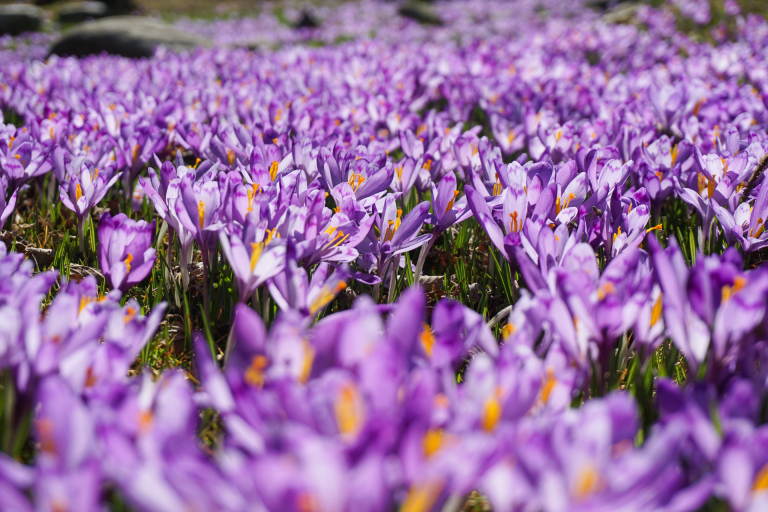
2. Limited Harvest Window:
Saffron, commonly known as “red gold,” is harvested once a year, usually within a short time frame of 10-20 days during the autumn season. The saffron plant has a low yield, producing only a small number of flowers per bulb. The harvest is a time-sensitive process that starts before sunrise, aiming to maintain the spice’s optimal quality and underscoring its exclusivity. The scarcity of saffron, attributed to its low yield and limited availability, plays a significant role in driving up its market price.
3. Strict Growing Conditions:
Growing saffron requires specific and favourable conditions, and it is predominantly cultivated in regions such as Iran, India, Spain, and others. The geographical constraints and climate requirements pose challenges to saffron cultivation, restricting its global production. The value of saffron experiences seasonal variations, and changes in the monthly price index reflect fluctuations influenced by factors like the seasonality of harvesting.
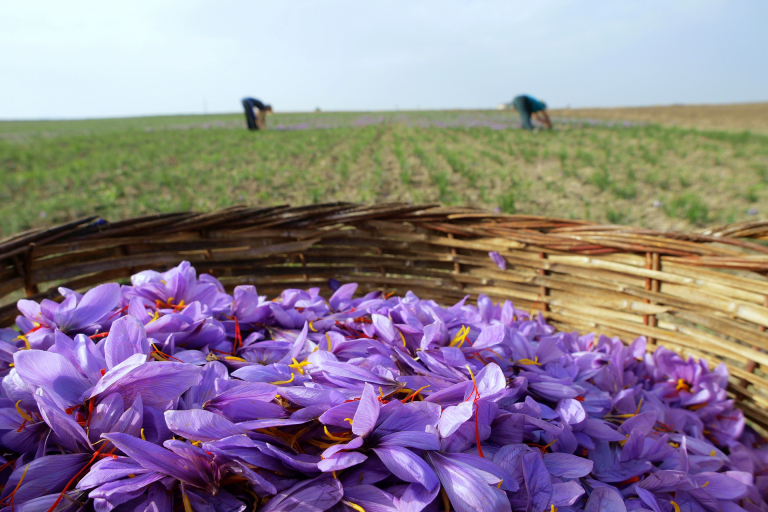
4. Quality Factors:
The quality of saffron is influenced by various factors, including the strength of corm roots, thickness and length of stigmas, and the careful drying process. These elements directly impact the overall quality and potency of the spice.
5. Limited Corm Lifespan:
Each saffron field can produce the spice from the same corms for up to seven years. Beyond this period, the soil’s depletion of essential minerals hinders saffron cultivation for at least two decades, underscoring the sustainability challenges associated with its production.
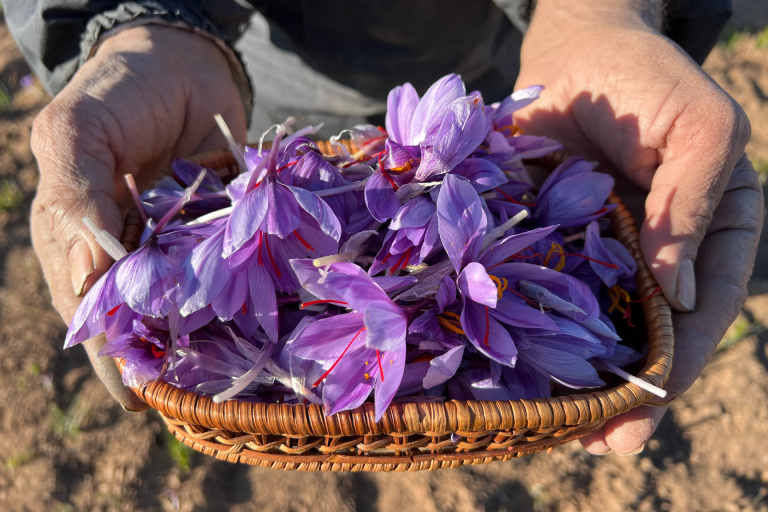
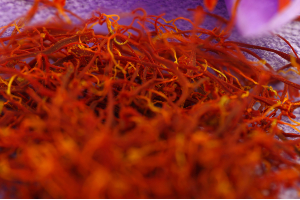
Conclusion
In conclusion, Iranian Saffron stands as a symbol of culinary luxury and holistic well-being. Its journey from the fertile fields of Iran to your kitchen adds a touch of elegance to every dish. Embrace the allure of Iranian Saffron, and elevate your culinary adventures with this exquisite spice.
ASA Market offers the finest and premium saffron across UK and beyond. For large quantities, you can contact us by email or telephone.

